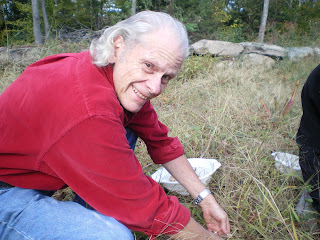 The focal point of our "Andalucian Odyssey" trip to Morocco and Spain in January 2011 was to be the Alhambra (al-Hamra' in Arabic). This fabled, mystical city was the center of the Nasrid Empire during Islamic rule in the Iberian peninsula. The gardens are watered through aqueducts that bring snow-melt down from the Sierra Nevada, to the south-east of the city. We had read the descriptions on-line of the Alhambra, and the passages in Philippa Gregory's "The Constant Princes" that show what the Infanta - the Princess Catalina (Catherine) who was betrothed to Prince Arthur of England - experienced during her parents' capture of the city from the Moors. Doug had also read "Tales of the Alhambra" by Washington Irving which describe his experiences living there in the 1800s, and which relate many of the tales (whether real or mythical) that he learned during his sojourn.
The focal point of our "Andalucian Odyssey" trip to Morocco and Spain in January 2011 was to be the Alhambra (al-Hamra' in Arabic). This fabled, mystical city was the center of the Nasrid Empire during Islamic rule in the Iberian peninsula. The gardens are watered through aqueducts that bring snow-melt down from the Sierra Nevada, to the south-east of the city. We had read the descriptions on-line of the Alhambra, and the passages in Philippa Gregory's "The Constant Princes" that show what the Infanta - the Princess Catalina (Catherine) who was betrothed to Prince Arthur of England - experienced during her parents' capture of the city from the Moors. Doug had also read "Tales of the Alhambra" by Washington Irving which describe his experiences living there in the 1800s, and which relate many of the tales (whether real or mythical) that he learned during his sojourn.We spent the day wandering around the beautiful gardens, courts and rooms of the Alhambra - the Court of the Lions was under renovation (much to our disappointment) - the Court of the Myrtles, the Lindaraha, the Queen's Dressing Room, and the Princesses Tower. Then across a small valley to the Generalife, the pleasure gardens that the rulers retired to when wishing to escape the pressures of daily political life. As in every other garden throughout the Alhambra complex, running water kept up a ceaseless bubble that relaxed and soothed the spirit.
Leaving the palace complex, we descended a path through the quiet "Alhambra Gardens" and out through the Pomegranate Gate, and back into the city with its bustling traffic and frantic sellers, students, and businessmen hurrying along with their petty, unseeing affairs. In the meantime, however, our eyes had been opened, and our souls washed by the calmness and quiet of a by-gone era, an era that lives on in one small spot on earth, and now, also, in our own hearts and minds.





